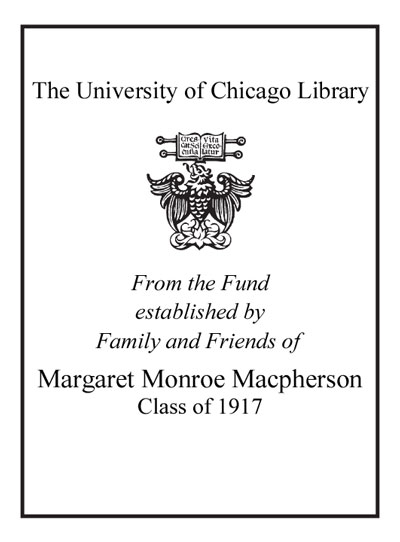Creating literacy instruction for all children /
Saved in:
| Author / Creator: | Gunning, Thomas G. |
|---|---|
| Edition: | 4th ed. |
| Imprint: | Boston, MA : Allyn and Bacon, c2003. |
| Description: | xviii, 638 p. : ill. (some col.) ; 27 cm. |
| Language: | English |
| Subject: | |
| Format: | Print Book |
| URL for this record: | http://pi.lib.uchicago.edu/1001/cat/bib/4760192 |
Table of Contents:
- Every chapter begins with Anticipation Guide and Using What You Know
- Every chapter concludes with Summary, Extending and Applying, Developing a Professional Portfolio, and Developing a Resource File
- Most chapters end with Essential Standards and Assessment
- Preface
- 1. The Nature of Literacy and Today's Children
- The Nature of Reading
- The Reader's Role in the Reading Process
- Approaches to Reading Instruction: Whole versus Part Learning
- Importance of Literacy Models
- Approach Taken by this Text
- Stages of Reading Development
- Status of Literacy
- Standards Movement
- A Reading and Writing Program for Today's Students
- 2. Evaluation
- The Nature of Evaluation
- Placement Information
- Norm-Referenced Versus Criterion-Referenced Tests
- Judging Assessment Measures
- Reporting Performance
- Rubrics
- Assessment in Basal Series
- Other Methods of Assessment
- Self-Evaluation
- Evaluating Writing
- Portfolios
- Basal Reader Assessment
- Assessing Materials
- 3. Fostering Emergent/Early Literacy
- Understanding Emergent Literacy
- Fostering Emergent Literacy
- Core Activities for Building Emergent/Early Literacy
- Reading in Preschool
- Working with Parents
- Family Literacy
- Monitoring Emergent Literacy
- Help for Struggling Readers and Writers
- 4. Teaching Phonics, High Frequency, and Syllabic Analysis
- Rationale and Approaches for Phonics Instruction
- How Words Are Read
- How High Frequency Words Are Learned
- Stages in Reading Words
- Basic Principles of Phonics Instruction
- Phonics Elements
- Approaches to Teaching Phonics
- Scope and Sequence
- Adapting Basal Reader Instruction
- Phonics and Spelling
- Strategy Instruction
- High Frequency Words
- Building Fluency
- Syllabic Analysis
- Decodable Texts
- Help for Struggling Readers and Writers
- 5. Building Vocabulary
- The Need for Vocabulary Instruction
- Stages of Word Knowledge
- Seven Principles of Developing Vocabulary
- Techniques for Teaching Words
- A Planned Program
- Remembering Vocabulary
- Teaching Special Features of Words
- Learning How to Learn Words
- Supplying Corrective Feedback
- Help for Struggling Readers and Writers
- 6. Comprehension: Theory and Strategies
- The Process of Comprehending
- Comprehension Strategies. Social-Constructivist Nature of Comprehension
- Learning Environment
- Integration of Strategies
- Importance of Affective Factors
- Help for Struggling Readers and Writers
- 7. Comprehension: Text Structures and Teaching Procedures
- Nature of the Text
- The Role of Questions in Comprehension
- Frameworks for Fostering Comprehension
- The Cloze Procedure
- Critical Reading
- Help for Struggling Readers and Writers
- 8. Reading in the Content Areas
- Overall Goals of Literacy Instruction in the Content Areas
- Using Content Area Texts
- Children's Books and Periodicals in the Content Areas
- Group Placement Inventory
- Instructional Techniques
- Teaching Content Area Knowledge
- Reading for Conceptual Change
- Nature of Knowledge and Skills Required in Major Content Areas
- Writing to Learn
- Sheltered English
- Reading to Remember
- Fostering Retention
- SQ3R: A Theory-Based Study Strategy
- Test-Taking Strategies
- Study Habits
- Expressive Study Skills
- Metacognitive Study Strategies
- Help for Struggling Readers and Writers
- 9. Experiencing Literature
- Experiencing Literature
- Types of Literature
- Voluntary Reading
- Help for Struggling Readers and Writers
- 10. Approaches to Teaching Reading. Changing Approaches to Teaching Reading. Basal Approach. Literature-Based Approach
- Individualized Reading/Reading Workshop
- Language Experience Approach
- Whole Language
- Guided Reading
- Four Blocks
- An Integrated Approach
- Help for Struggling Readers and Writers
- 11. Writing and Reading
- The Roots of Writing
- Guided Writing
- Process Approach to Writing
- Writing Workshop
- Thinking and Reading Like a Writer
- Interpersonal Writing
- Improving Expository Writing
- Guiding the Writing of Reports
- Assessing and Improving Writing: The Key Traits Approach
- Technology and Writing
- Reading Helps Writing
- A Full Menu
- Help for Struggling Readers and Writers
- 12. Diversity in the Classroom
- Teaching All Students
- Students at Risk
- Students with Disabilities
- Gifted and Talented
- Inclusion
- Intervention Programs
- Tutoring Programs
- Help for Struggling Readers and Writers
- 13. Constructing and Managing the Literacy Program
- Constructing a Literacy Program
- Managing a Literacy Program
- Literacy and Technology
- Literacy in Today and Tomorrow's World
- Professional Development
- Help for Struggling Readers and Writers
- References
- Index
- Appendix A. Graded Listing of 1000 Children's Books
- Appendix B. Informal Assessment of Key Skills and Strategies

